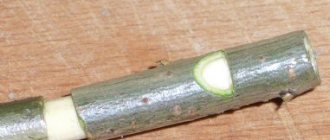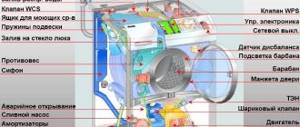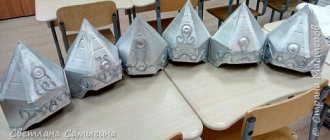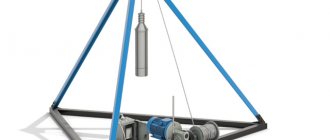“Third hand” for do-it-yourself soldering
Hello friends, radio amateurs and visitors to the site “Visiting Samodelkin”, sometimes when soldering circuit boards and the like, it becomes necessary to hold the part being soldered so that it does not move. And to make soldering easier, I decided to show you how to make a “Third Arm” for soldering various boards and microcircuits. The clamps of this “Third Hand” are made of plastic, which makes them dielectric. The “third arm” will be mounted on a fiberboard base on which you can attach various soldering devices such as: a soldering iron holder, a solder spool, a backlight, a magnifying glass, and many others that you want to attach. The advantages of this “Third Hand” design are: ease of manufacture; available materials; The clamps will be made of plastic, which is necessary when soldering circuits with voltage.
- Sheet steel 3 - 3.5 mm thick - Grinder (angle grinder) - Drill or drilling machine - M8 hairpin 100 mm long - M8 hairpin 60 mm long - M8 nuts - Welding machine - M4 bolts - M4 nuts - Sheet steel 2 mm thick - Small plastic clamps (purchased at the nearest store) - 25 mm self-tapping screws - Drills
Well, let's get started, take these M8 studs, the length of the first is 100 mm, the second is 60 mm, and the nuts for them.
Next, we take and from sheet steel approximately 3 - 3.5 mm thick, using a grinder, we cut out the following blanks with dimensions: Two of them are 17 * 20 mm, and the third is 17 * 23 mm.
The next step is to take a 100 mm long stud, screw on a nut and weld the blanks along the edges, the dimensions of which are 17 * 20 mm, holding the third blank between them (no need to weld it!)
After we have welded the workpieces, we check them to ensure they are welded evenly. Next, take a 4 mm drill and drill all three workpieces in the center.
After the hole is drilled, we take a short pin and weld it to the longer plate. You need to weld it evenly.
After we have welded everything, we take the resulting blanks and connect them with an M4 bolt. We check that the workpieces can move freely relative to another workpiece; if everything moves, then we move on; if not, then we sharpen the corners of the workpiece with a short pin.
We take sheet steel approximately 2 mm thick and cut out a strip 20 mm wide; the length of this strip can vary, depending on how long you will clamp the part to be soldered.
We drill holes, in the center it is necessary to drill a hole of 8 mm, and at the edges of 4 mm.
The next step is to clamp the workpiece between the nuts on a short stud. The lower nut will need to be grabbed slightly with a welding machine, this is necessary for ease of tightening.
Next, from the same steel 2 mm thick, we cut out two such blanks, the dimensions of which are 20 * 45 mm, we punch and drill holes of 4 mm
We fasten the resulting blanks to the main part with M4 bolts
After that, I went to the store and bought two of these plastic crocodiles, with two metal loops
The loops had to be squeezed a little using pliers
We fasten the crocodile clips to the main part with M4 bolts
The third arm is almost ready, all that remains is to secure it. For ease of work, I decided to take a larger platform. To make the platform, a fiberboard sheet measuring 50 * 40 cm and 2 cm thick was used.
To secure the third arm, take a step back from the edge 7 - 8 cm and drill a hole 8 mm; on the other side, expand the hole to 20 mm, this is necessary so that the nut fits into the wood
To prevent the third arm from falling into the fiberboard sheet, we weld a washer to its base by retreating about 2 cm.
Screw the third arm to the base.
I also decided to make a stand for the soldering iron. And I simply cut it out of wood with a jigsaw.
We fasten the stand with self-tapping screws, as you can see the soldering iron fits well.
Well, our “Third Hand” is ready!
You can improve the design as you wish.
Become the author of the site, publish your own articles, descriptions of homemade products and pay for the text. Read more here.








